Every Pokémon generation brings a new region to discover. But with the open-world design of Pokémon Scarlet and Violet, instead of simply getting an updated map with a linear path from start to finish, it feels like there’s a vast countryside to explore. Then you add a deeper story with three branching paths, along with a bunch of quality-of-life improvements and tweaks to the traditional Pokémon format, and you have a game that’s a blast to get lost in — even with the title’s unfortunate performance issues.
Welcome to Paldea
As always, the goal in Pokémon Scarlet and Violet is to become the very best. However, the twist for this generation is that you’re also a student at a nearby academy (Naranja in scarlet, Uva in Violet), which is where you’ll meet the other important characters in your story, or in this case stories. Nemona is a big-sister type who serves as both your rival and your guide as you try to become a Pokémon League champion. She’s a helluva lot more likable than Hop from Sword and Shield, and she helps teach you some of the basics of battling, which is helpful because you don’t actually spend a lot of time in classes.
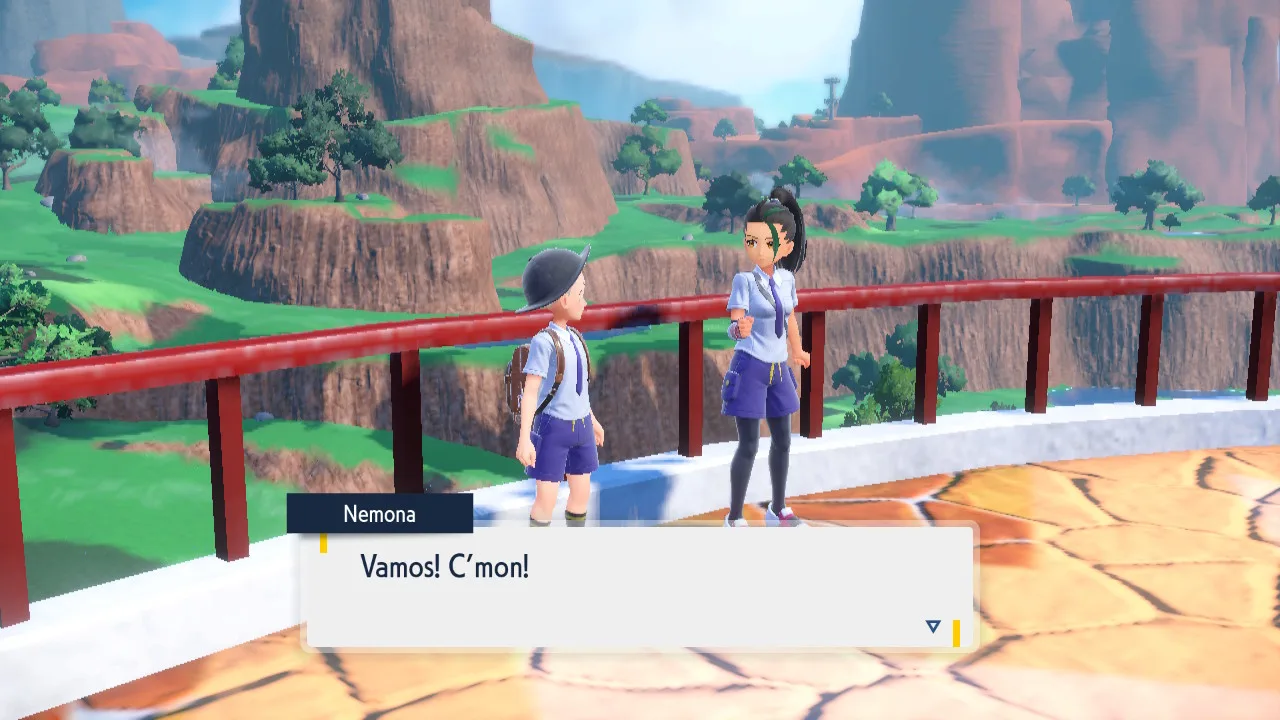
Sam Rutherford/Engadget
Then there’s Team Star, which is sort of this generation’s Team Rocket equivalent, except that this time the gang is more like an afterschool club with a bad reputation and way too much funding. Finally there’s Arven, the son of the new professors (Professor Turo or Professor Sada depending on your version of the game), who is on a hunt to find the fabled Herba Mystica — magical plants that are unique to Paldea.
Sure, the journey to collect eight gym badges and defeat the Elite 4 is as straightforward as ever (well, as much as it can be in an open-world game). But learning the motivation behind Arven’s search for Titan Pokémon nearly brought a tear to my eye. And by introducing special super-sized Pokémon, the game has the freedom to add a new type of combat beyond your battles with trainers and wild monsters.
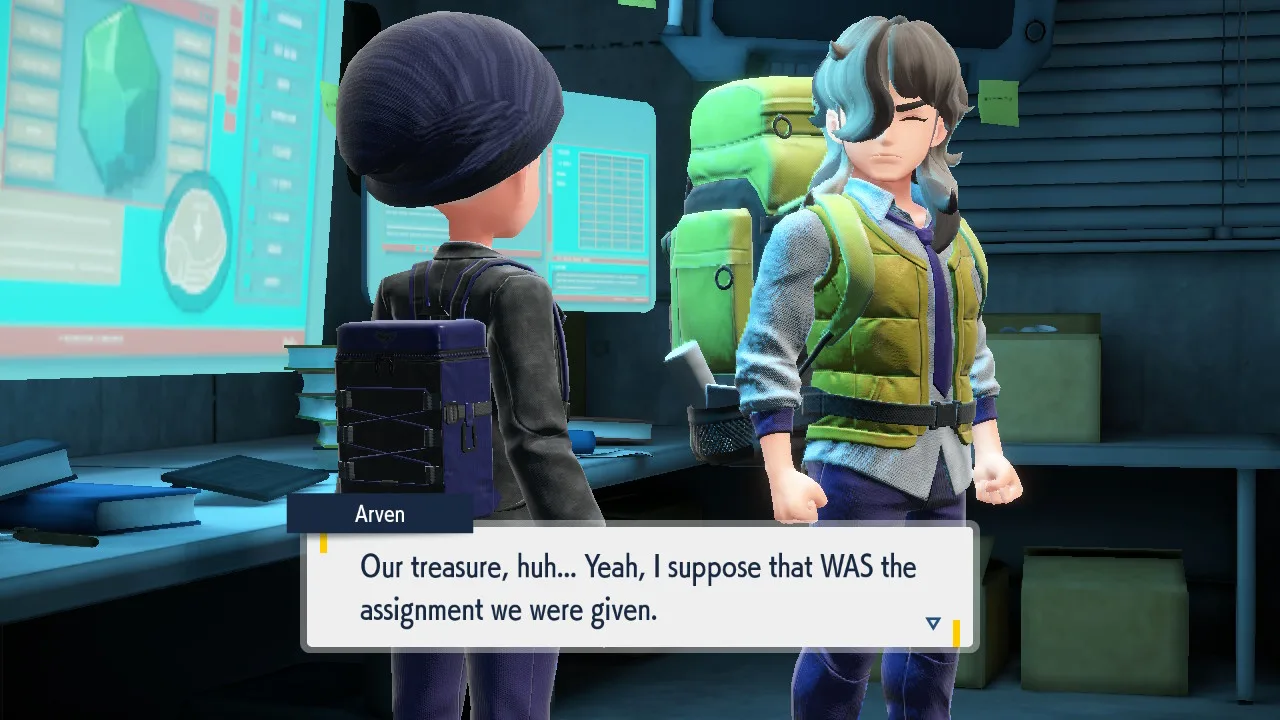
Sam Rutherford/Engadget
Meanwhile, for the Starfall Street storyline, Scarlet and Violet use this twist to introduce yet another twist on Pokémon battling. Instead of battling a handful of underlings one-by-one, you use your top three Pokémon to take down waves of enemy monsters off-screen sort of like a Pokémon-theme auto-battler, which plays out more like an endurance test than the game’s traditional turn-based combat. And at the end, you battle the boss of each crew before learning about what made them join Team in the first place which eventually leads to a surprisingly wholesome redemption arc.
The big impact of this is that by having three storylines instead of one, Scarlet and Violet is able to tell a bigger tale from multiple perspectives unlike so many previous entries. And I think this approach really pays off because the paths that don’t have anything to do with becoming the number one trainer deliver some of the most heartwarming moments the series has ever produced.
So much room for activities
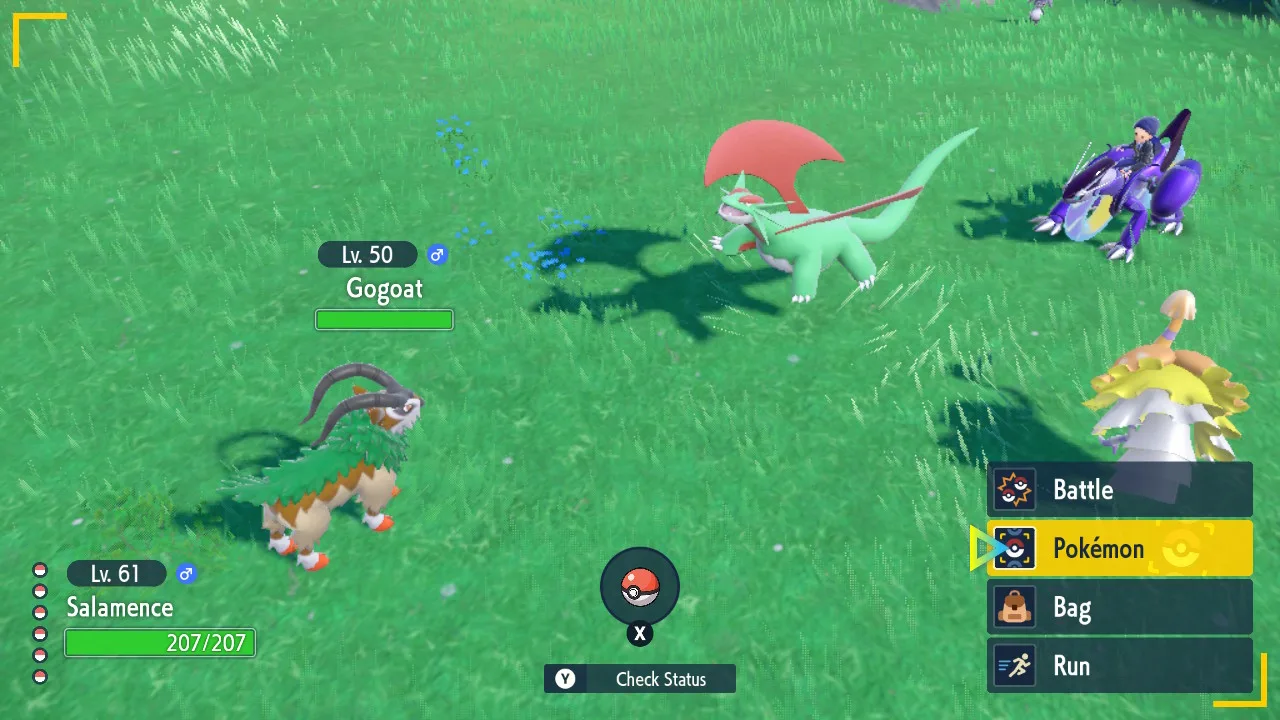
Sam Rutherford/Engadget
Aside from the multiple storylines, the move to an open-world game design is a big change for the franchise. We got a taste of this with the Wild Area in Sword and Shield (and Legends: Arceus as well), but for generation nine, Scarlet and Violet have really leaned into this fresh approach.
Right away, the world feels big — I nearly got lost just 10 minutes into the game before I even made it to the academy. From there, things get even better, because you quickly get the ability to use your box-art legendary as a vehicle, allowing you to cruise to one point or another in style. Meanwhile, the landscape is littered with Pokémon in a way that feels downright bucolic. I stumbled on Magikarp splashing happily away in lakes and rivers, while in other areas I found a circle of Teddiursa gathered around an Ursaring, as if daddy was telling his kids a story while camping. The downside, though, is that because the world is so big and opposing trainers are often spread quite thin, sometimes it feels a bit lonely, as if there’s more space than the developers know what to do with.
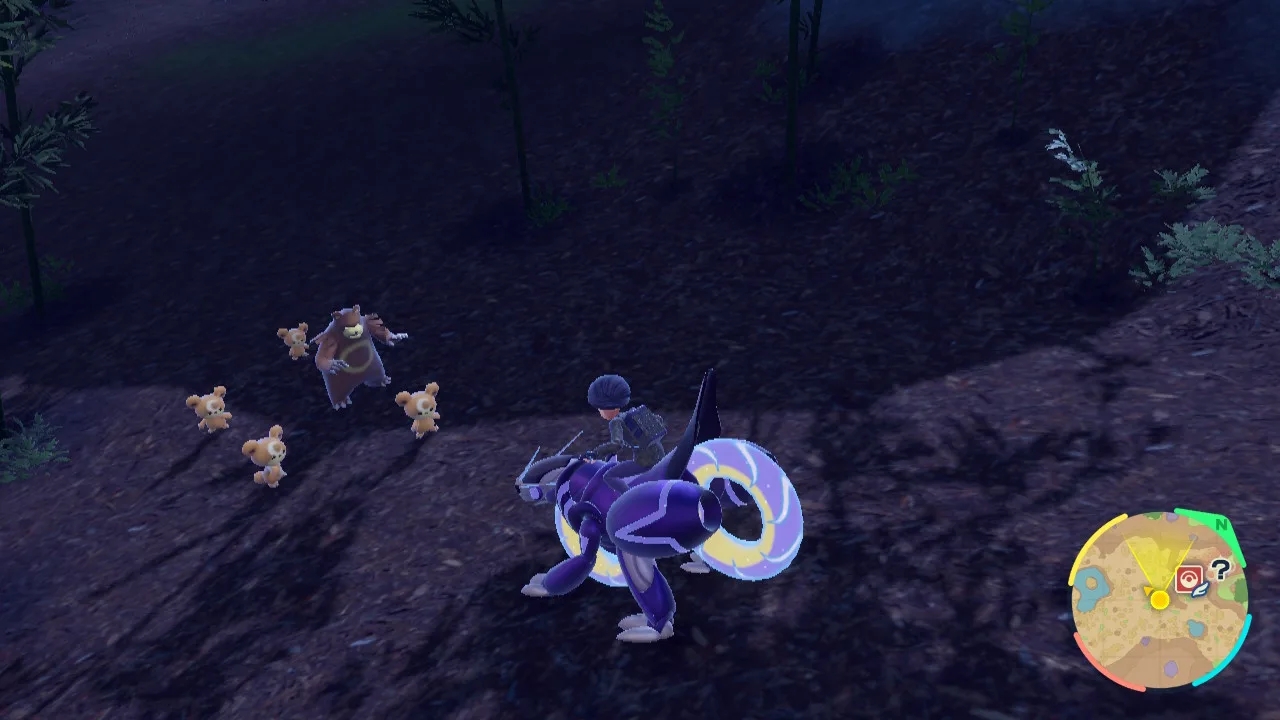
Sam Rutherford/Engadget
Outside of the big towns, there aren’t a lot of other settlements, and aside from the academy and the main Pokémon gyms, you can’t even really go inside buildings. On top of that, because enemy trainers don’t engage you on sight anymore, sometimes it feels like you’re on a hunt for people instead of Pokémon. Don’t get me wrong, there are also a ton of items and hidden treasures littered across the map (on top of a full post-game zone and four bonus legendaries), but sometimes I felt like I just wanted more of everything. More enemy trainers, more towns and more events that aren’t tried to the three main stories.
I also need to point out that using the main map makes me feel crazy. While you can’t pin locations for revisiting later like in BotW, it’s easy to set destination markers to highlight your next gym or story event. The issue is that when you hit Y to open the primary world map, every time North is orientated in a seemingly random direction, which makes figuring out where you are and where you want to go more annoying than it should be.
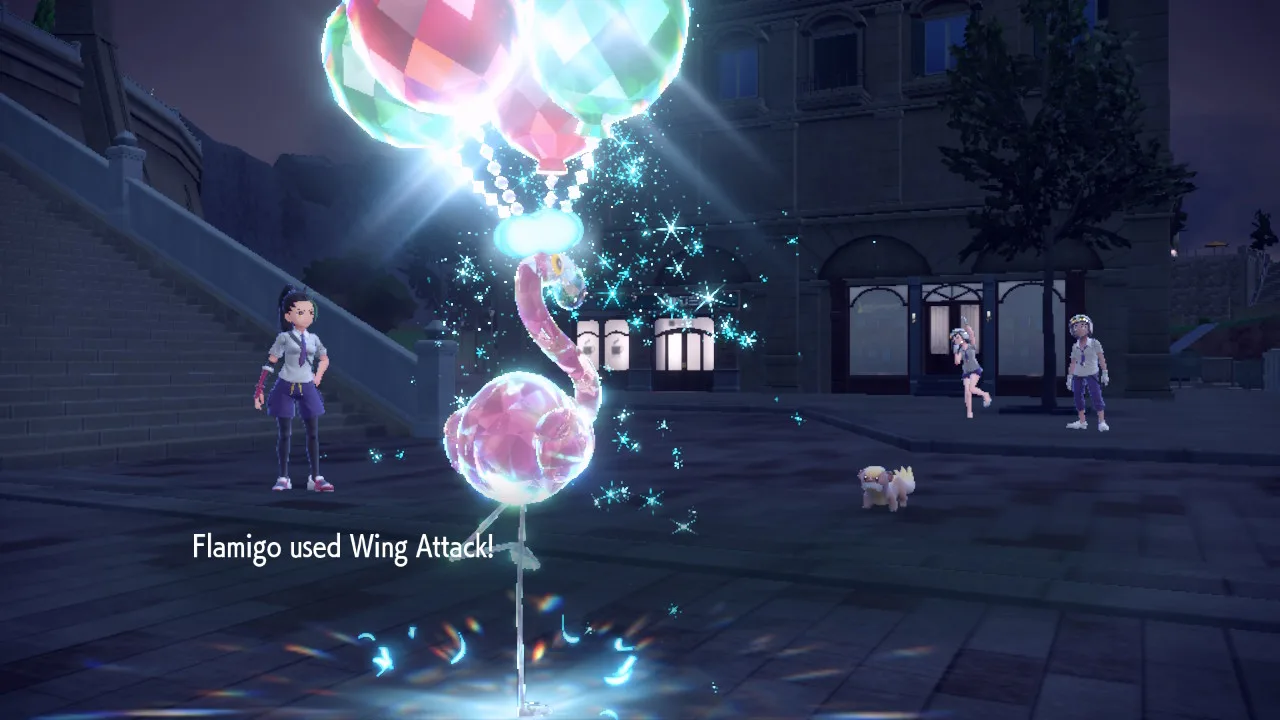
Sam Rutherford/Engadget
Other major changes include Terastallizing, which allows a Pokémon to power up and potentially change its default type, which can act as a surprise during battles when your opponent is expecting something else. It’s a neat twist on the Gigantamax and Max Evolution mechanics we’ve seen in previous games, though the effect can look a bit silly for certain Pokémon, particularly flying types which are represented by three giant crystalline balloons that pop out of their heads.
But to me, some of my favorite tweaks are the smaller quality-of-life changes added in Scarlet and Violet. The new auto-heal feature lets you restore HP to wounded monsters simply by highlighting them and pressing the – button. TMs are now also craftable, so you can more easily teach your monsters the moves you really want. And instead of move tutors, you can relearn forgotten attacks right from a Pokémon’s summary instead of having to find a specific person/location in the game.
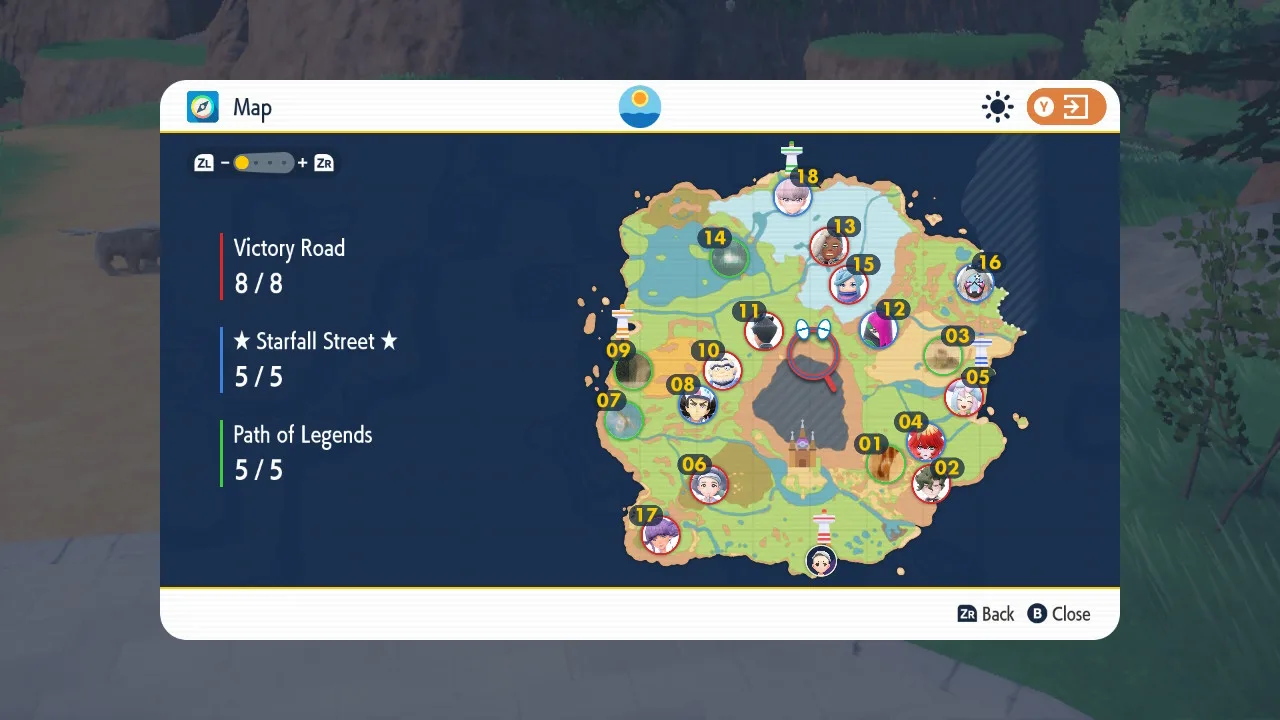
Sam Rutherford/Engadget
Of course, the move to an open-world design isn’t without its flaws, with the main one being that there isn’t any level scaling for enemies. So while technically you can go anywhere you want and tackle gyms in any order, that isn’t really true in practice. This means you need to follow a somewhat pre-determined progression because if you try to jump straight from the starter zones into areas with a bunch of high-level monsters, you’re going to get clobbered. Same goes for tackling trainers that have fully evolved squads, while you’re still rocking a level 15 Fidough. There are also a couple areas that are walled up until you complete specific story events, and while it’s possible to climb or jump over some barricades, it’s generally not a good idea. Thankfully, if you ever lose your way or forget what to do next, you can always ask Nurse Joy (or one of her countless sisters) at a Pokémon center, who will suggest the best place for you to go next.
When you need to call attention to a game’s performance it’s usually for one of two reasons: it’s either a graphical tour de force or it runs as smooth as the skin of a Qwilfish. And sadly for Pokémon Scarlet and Violet, it’s the latter. The game just kind of chugs. Even doing simple stuff like panning the camera around can result in choppy framerates, with slowdown getting worse in more congested areas like cities and towns. NPCs in the background can also look like slideshows, as they slowly stutter step across the screen. And when you look at things up close, textures often look flat while shadows are big and blotchy, not to mention all the jaggies you see from diagonal lines (a little anti-aliasing would go a long way). Don’t get me wrong, it’s not an ugly game, but I feel like that biggest game franchise in the world can do better.
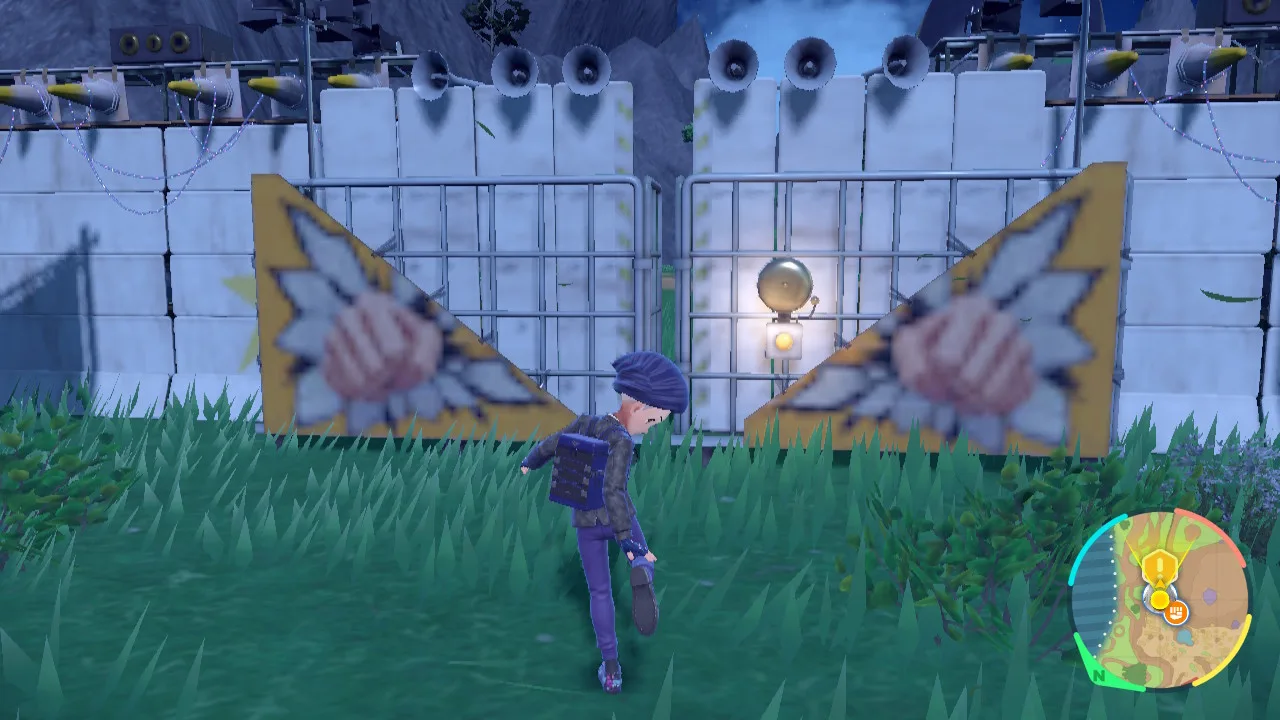
Sam Rutherford/Engadget
It’s almost like Gamefreak’s engine for Pokémon puts a massive strain on the Switch’s hardware, which is pretty mind-boggling from a game that looks similar to Breath of the Wild, except that it’s not nearly as pretty, it’s lot less dense and it’s way way smaller in size. I even suffered three crashes over my 35 hours of game time along with countless other minor bugs and visual glitches (I got stuck inside terrain twice, once of which required me to restart the game).
Thankfully, Scarlet and Violet’s autosave system is pretty reliable, so even when the game crashed, I never lost more than a couple minutes of progress. Regardless, while no software is bug-free, the latest Pokémon runs a lot worse than your typical video game, and as a whole, the game succeeds in spite of its performance, which is kind of depressing.
Which version should you get?
Without giving too much away, aside from a handful of Pokémon that are only available in one version or the other, the main differences between Scarlet and Violet come down to their respective legendaries and how that plays into the final endgame area. So if you prefer more historical-looking monsters like Koraidon (korai means ancient in Japanese), pick Scarlet. And if you like sleeker, more sci-fi looking Pokémon like Miraidon (mirai means future in Japanese) go for Violet.
Wrap-up
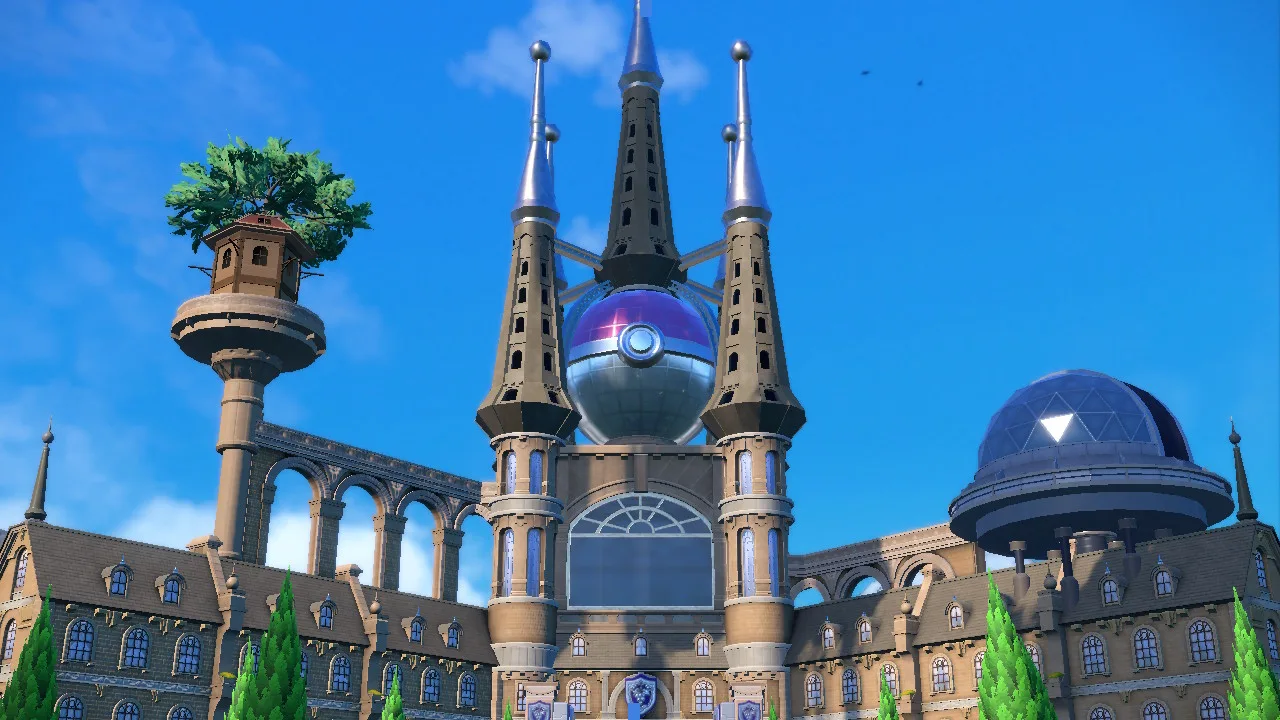
Sam Rutherford/Engadget
For a series that I started playing in middle school, all the changes in Pokémon Scarlet and Violet result in a game that feels fresh but still familiar. The world is bigger than ever, and now you have the freedom to explore it how you like (mostly). The addition of extra storylines also allows the game to tell a deeper and more engaging narrative than any Pokémon game in recent history. Unfortunately the game’s performance issues put a damper on the overall experience. So while I’d love to see updates to the core turn-based combat in the future, Scarlet and Violet feel more alive than any game Pokémon that came before — especially since the franchise’s move to the Switch.
All products recommended by Engadget are selected by our editorial team, independent of our parent company. Some of our stories include affiliate links. If you buy something through one of these links, we may earn an affiliate commission. All prices are correct at the time of publishing.
Credit: Source link


Comments are closed.